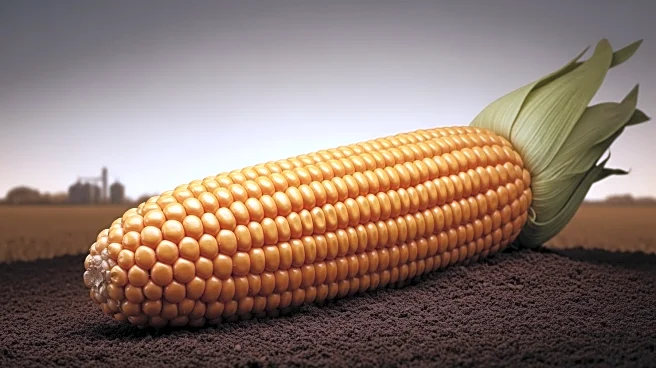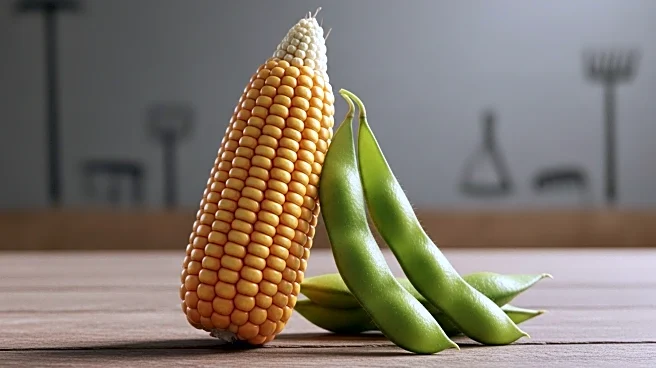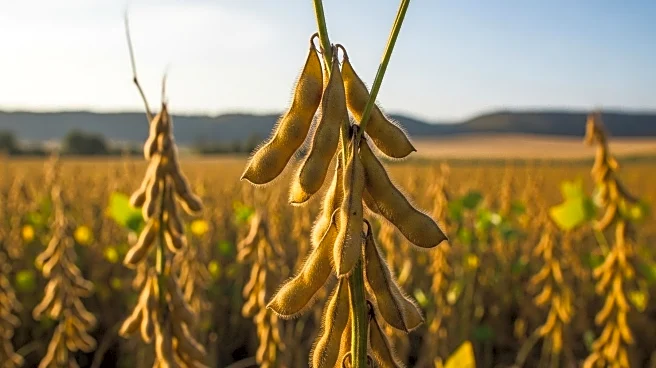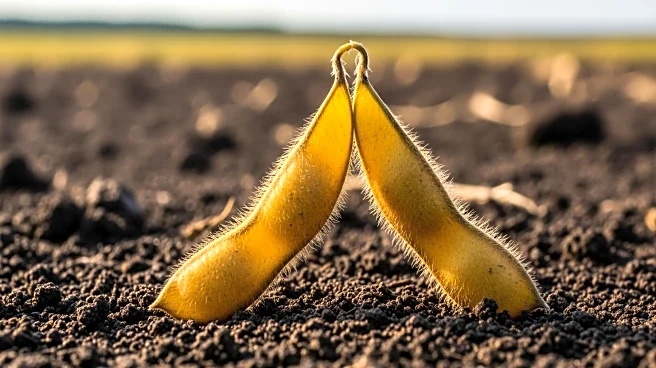What's Happening?
Grain markets closed lower on September 30, 2025, following the release of the USDA's September Grain Stocks report and the Small Grains 2025 Summary. December corn ended the day down 6 cents at $4.15½ per bushel, while November soybeans closed down 8¾ cents at $10.01¾ per bushel. Wheat also saw declines, with December CBOT wheat down 11½ cents at $5.08 per bushel. The USDA report indicated larger-than-expected corn and wheat inventories, which contributed to bearish market sentiment. Despite soybean stocks being below expectations, the lack of Chinese demand continues to weigh on prices.
Why It's Important?
The decline in grain prices following the USDA report reflects the market's reaction to larger-than-expected inventories, which could lead to lower commodity prices and impact farmers' revenue. The bearish sentiment in corn and wheat markets may influence planting decisions and financial strategies for agricultural producers. The report's findings on soybean stocks highlight ongoing challenges in export demand, particularly from China, which is a significant market for U.S. soybeans. The market's response underscores the importance of accurate forecasting and the impact of global trade dynamics on U.S. agriculture.
What's Next?
Market analysts and traders will continue to monitor the USDA's reports for further adjustments in yield and stock projections. The October World Agricultural Supply and Demand Estimates (WASDE) report may provide additional insights into export demand and production estimates. Farmers may need to reassess their planting strategies and storage solutions in response to market conditions. The ongoing lack of Chinese demand for soybeans could lead to further adjustments in export projections and influence future price movements.
Beyond the Headlines
The USDA's report highlights the complexities of agricultural forecasting and the challenges in accurately predicting crop yields and inventories. The adjustments to production estimates underscore the importance of adaptive strategies in agricultural planning and the need for robust data analysis. The report also raises questions about the impact of disease on crop yields and the potential for future disruptions in supply chains.











